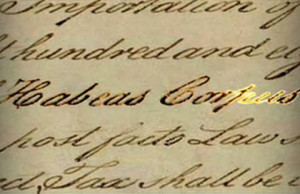The writ of Habeas Corpus is one of the most powerful forms of law that is applicable in our country. It is an ancient common law prerogative writ, as it is a legal procedure, for which every citizen in the country has a right. A court has the power, or rather it is the duty of the court, to issue the Extraordinary Writ of Habeas Corpus. It is applied in cases where a person has been restraining the liberty of another person.
The person who is restraining the liberty of another person by keeping him in custody will have to answer to the court, the reasons for doing so. If the person is unable to provide sufficient details regarding the custody, then the court is bound by duty to order the release of the person in custody.
The writ of Habeas Corpus definition
The writ of Habeas Corpus is one of the most powerful and fundamental part of the American and all other English common law derivative systems of jurisprudence. It is a peaceful method of negotiating with a person who is in control of the liberty of another. The writ of Habeas Corpus has its roots in the British common law, and to study the history of the Habeas Corpus and to know more about it, it is necessary to understand a little bit of history.
Uses of writ of Habeas Corpus
The writ of Habeas Corpus is usually used when a child is being wrongfully kept in custody by one of the parents. When the other parent decides to change this, he or she can then approach the court with a writ of Habeas Corpus. It needs to be noted that a writ of Habeas Corpus cannot be brought to modify the custody of the person.
Not everyone can bring a writ of Habeas Corpus in a court of law. It should be a person who has legal right to custody of the child or children who are in custody. In certain cases were the legal custodian has been proved to be unfit by clear and satisfactory evidence, the court can grant custody to someone other than the legal custodian.
The writ of Habeas Corpus definition can prove to be a tough nut to crack if you are not aware of certain other legal definitions.
Google+



















